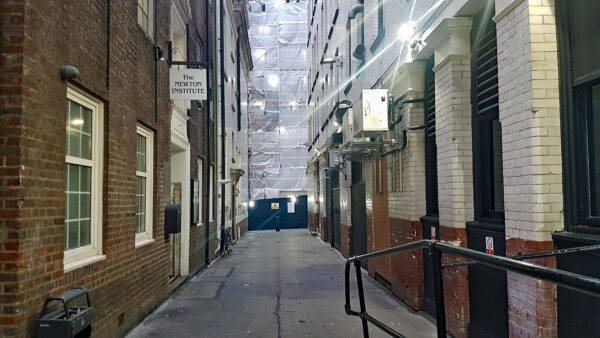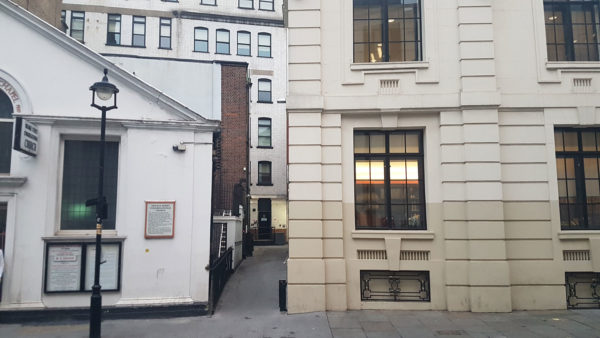This is one of those alleys that exist today purely to give access to back entrances and store rubbish. Yet it was once lined with houses and offices, and a very famous occupant.
The area just to the south of Leicester Square was originally a series of mews and stables, known variously as Blew Mews and the Duke of Monmouth’s Stables, and surrounded by probable housing for the servants and staff.
This was redeveloped and according to John Rocque’s 1746 map of London this alley was originally called Lang’s Court, and wrapped around a site owned by an early Huguenot church – who also leased some of the land for housing.
The church is interesting, but the house more so, as it was occupied by none other than Sir Issac Newton.
Sadly that house was taken down in 1913 – originally to be rebuilt somewhere else, but one of the mysteries is where it ended up as it wasn’t rebuilt. The current building on the site is the Westminster Library, which was built in the Edwardian Baroque style in 1926.
The basement though still contains the original brick arches from the house occupied by Newton.
The church next to the library is still a functioning chapel, but not the original building which had been built in 1693 for the Huguenots, and later taken over by the Nonconformists, becoming a Congregational Church.
The church was demolished in 1913 as the building was in a poor state of repair, and in 1925 the council took out a 999-year lease on the site next to the church, and there they built their new library, while the — technically still a temporary building — new chapel was built next door.
The back of the church is an older building, known as the Newton Institute, although today occupied by the Ensign Trust, a religious organisation.
Although the alley is today a simple elbow around the library and chapel — in the 1800s, it also had a spur northwards in the corner leading up to Leicester Square.
Today it’s mainly lined with Edwardian tiles to reflect light into the alley, and 20th-century air conditioners strapped to the walls. The back entrance to the hotel is now a smoking zone for staff, and the rest of the space is used for rubbish bins. Which seems a shame for a plot of land that should be far more famous than it is, thanks to the celebrity of its former occupant.








